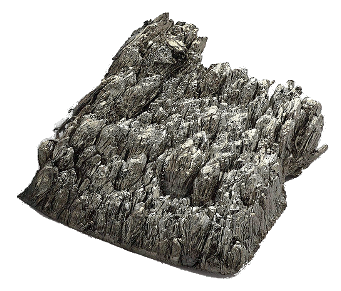
Tidal Forces
June 20, 2012 There's a saying that time and tide wait for no man. In a famous anecdote about man versus nature, Cnut the Great, king of England, Denmark, and other parts of Scandinavia about a millennium ago, set his throne at the sea shore and commanded the tide to halt. The tide, of course, refused his command, and this was supposedly a lesson to his countrymen that kings are not as omnipotent as some would hope. Perhaps sea level change caused by global warming will give a similar lesson to today's leaders. | Not much to look at, but very expensive to hold. Scandium, named after King Canute's Scandinavia, is presently about $150 per gram.[1] (Photo by Heinrich Pniok, via Wikimedia Commons). |
F = G m1 m2 / r2 =What all this means is that I'll weigh 0.0005 pounds less when the Moon is overhead, and 0.0005 pounds more when the Moon is underfoot. That change won't be detected on my bathroom scale, but there are sensitive pieces of equipment that respond to tidal forces. Pauline Gagnon, a member of the CERN ATLAS team, reports in a recent blog article that the Large Hadron Collider (LHC) must be adjusted to compensate for tidal forces.[2] Tidal forces were also seen in the predecessor to LHC, the Large Electron Positron collider (LEP). The cause is the differential tidal force seen at one side of the 27 km accelerator versus the other. This causes the circular accelerator to slightly alter shape, so the proton beam would wander if corrections were not applied. the accelerator also deforms from changes in the water level of nearby Lake Geneva.[2] To illustrate how important tidal forces are, there are 872 papers posted on arXiv with the word "tidal" in their title, 56 of which had been published up to June 10 of this year. Only four of the 872 address the Earth-Moon system. Although the Earth-Moon tidal system is presently not that scientifically interesting, it's become technologically very interesting because of the desirability of extracting energy from the tides.
(6.674 x 10-11)(80)(7.345 x 1022)/(3.85 x 108)2 =
0.00265 newton =
0.27 gram-force
 |
| Amplitude of the tides, in centimeters. The white lines are co-tidal with a one hour time difference. NASA image by R. Ray, Goddard Space Flight Center, via Wikimedia Commons. |